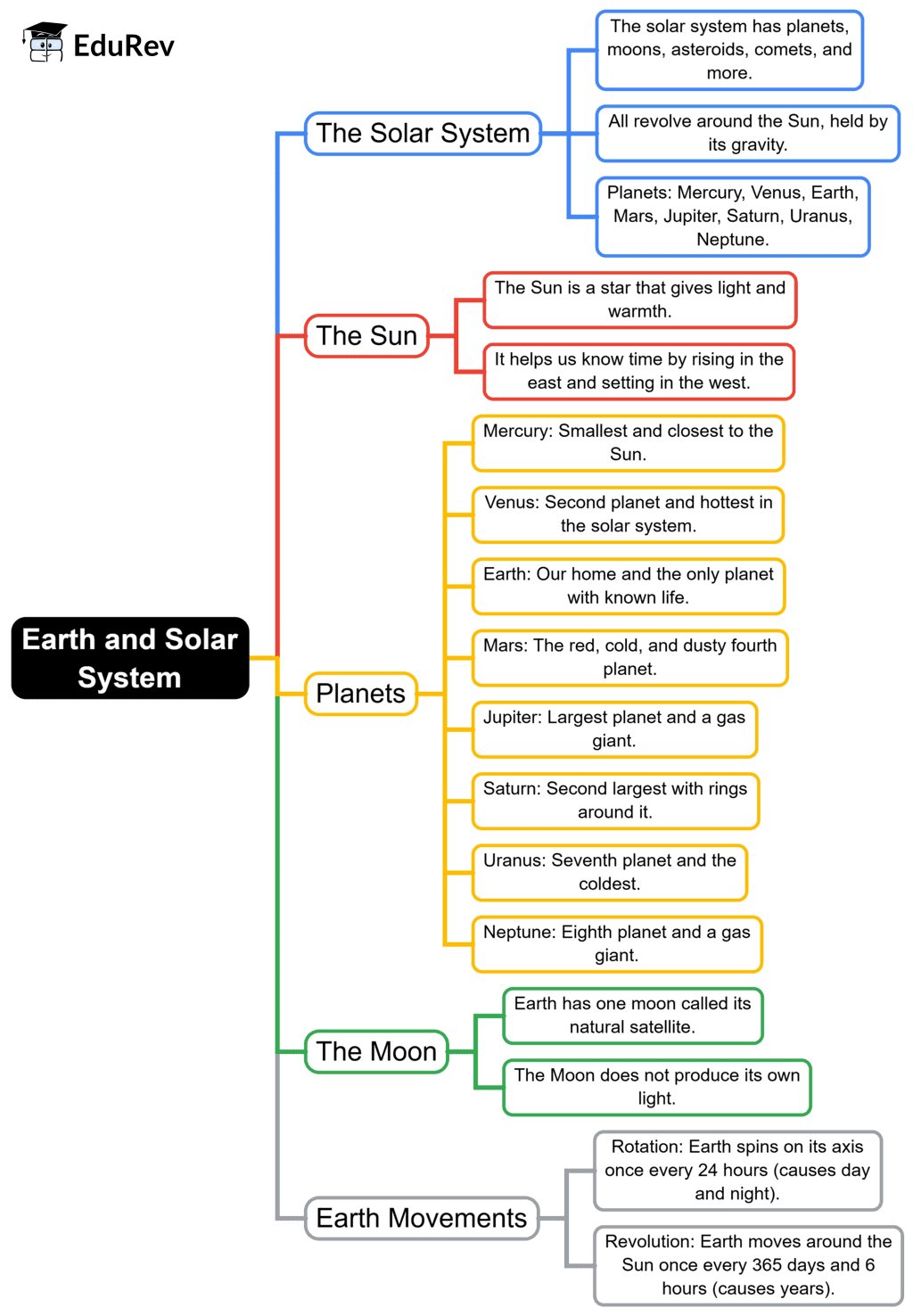Class 2 Exam > Class 2 Notes > EVS for Class 2 > Mind Map: Earth and Solar System
Mind Map: Earth and Solar System | EVS for Class 2 PDF Download

The document Mind Map: Earth and Solar System | EVS for Class 2 is a part of the Class 2 Course EVS for Class 2.
All you need of Class 2 at this link: Class 2
|
29 videos|304 docs|48 tests
|
FAQs on Mind Map: Earth and Solar System - EVS for Class 2
| 1. What is the Solar System and what does it consist of? |  |
Ans. The Solar System is a collection of celestial bodies bound by gravity, centered around the Sun. It consists of eight planets, their moons, dwarf planets, asteroids, comets, and meteoroids. The major planets include Mercury, Venus, Earth, Mars, Jupiter, Saturn, Uranus, and Neptune, with Earth being the third planet from the Sun.
| 2. How does the Earth compare to other planets in the Solar System? |  |
Ans. Earth is unique among the planets in the Solar System due to its ability to support life. It has a suitable atmosphere, abundant water, and a stable climate. Unlike the gas giants like Jupiter and Saturn, Earth is a terrestrial planet with a solid surface. Additionally, Earth has a relatively moderate temperature range and a diverse range of ecosystems.
| 3. What are the different layers of the Earth? |  |
Ans. The Earth is composed of four main layers: the crust, mantle, outer core, and inner core. The crust is the thin, solid outer layer that we live on. Below it is the mantle, which is semi-solid and allows for the movement of tectonic plates. The outer core is liquid and composed mainly of iron and nickel, while the inner core is solid and extremely hot, also made mostly of iron.
| 4. What is the significance of the Sun in the Solar System? |  |
Ans. The Sun is the central star of the Solar System and provides the essential light and heat that sustain life on Earth. It generates energy through nuclear fusion, converting hydrogen into helium. The Sun's gravitational pull keeps the planets in orbit and is crucial for maintaining the structure of the Solar System.
| 5. How do planets in the Solar System move? |  |
Ans. Planets move in elliptical orbits around the Sun due to gravitational forces. Their speed and distance from the Sun determine the length of their orbits. Additionally, the rotation of planets on their axes contributes to the cycle of day and night, while the tilt of their axes affects seasonal changes.
Related Searches




















